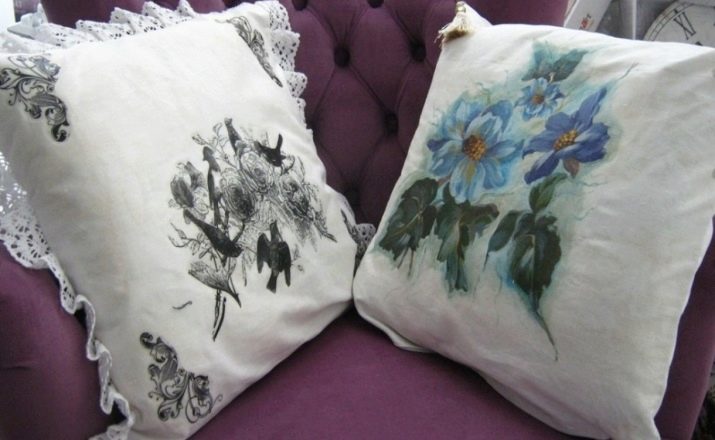Decoupage on fabric: features and methods
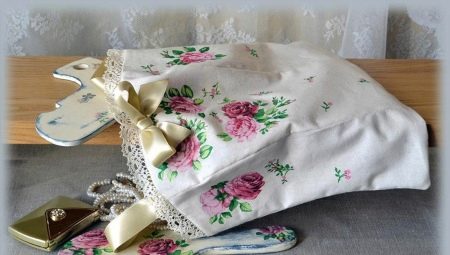
Decoupage on fabric is a very unusual and at the same time simple decoration option. Basically, this method of decoration is used on things that you do not plan to wash too often, as the pattern can deteriorate over time. Decoupage can be found on napkins, bags, tablecloths, outerwear. There are many different ways to transfer a design to fabric, one of the simplest is to use PVA glue.
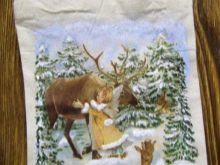
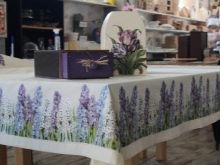
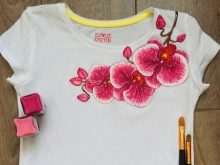
Necessary materials
Before starting work, you need to prepare some necessary materials that are needed to create decoupage:
- a pair of synthetic soft brushes (for applying glue);
- cloth to remove excess glue;
- regular PVA glue, not too liquid;
- a napkin with the selected pattern (to transfer to the fabric);
- water at room temperature;
- fabric (on which the drawing will be located);
- gauze;
- scissors;
- iron.
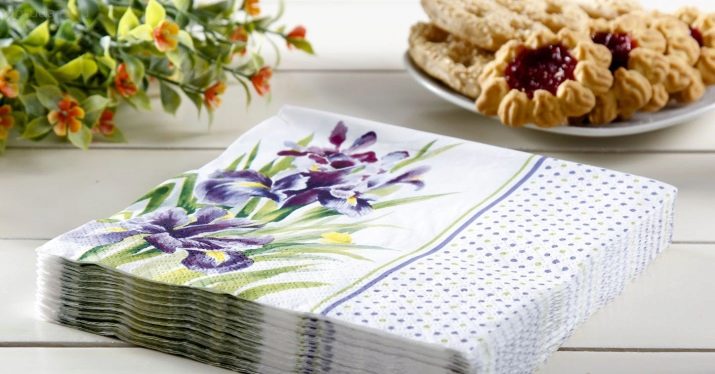
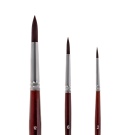
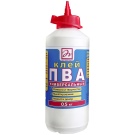
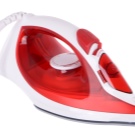
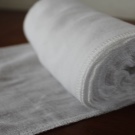
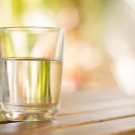
Recommendation: the main fabric on which the picture will be applied should preferably be made of natural materials so that no difficulties arise in the process.
For drawing, use paper napkins, and sometimes rice paper. Only synthetic brushes are used, but soft. And you may also need acrylic paints to outline the outline of the picture, and stains if they appear.
Preparation
First, we prepare the fabric where the picture will be located.
It is better to select the base with light shades so that the image is better seen, but if you want to experiment, then dark ones are also possible.
The first step is to wash the material in hot water and iron it well using steam. After all, many things have a feature of "sitting down".
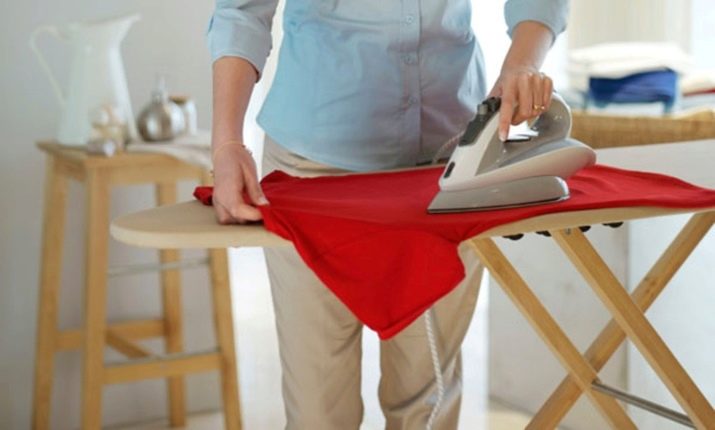
Then we circle the napkin, making a note where the drawing will be located. And only then we proceed to the process itself.
This kind of decorative art presupposes accuracy and precision in execution. If this is not the case, the drawing will turn out to be distorted or will not be translated at all.
Work principles
Decoupage can be done in two different ways. The work process is not very different from each other. The difference is in the way the glue is applied. And also in both cases, you can resort to using acrylic paints to give the desired look with the help of various decorations. If you use a special glue, it is possible to make a coating that will protect the finished item from loss of color and erasure of the pattern.
The main thing is to remove excess glue. If this is not done, the appearance will deteriorate. Those who are just starting to develop in this area mostly have problems with this, but over time, experience comes, and the quality of work improves. All the necessary materials that will be needed during the entire process can be purchased at the most common household as well as specialized stores. And in them you can also choose a special set.
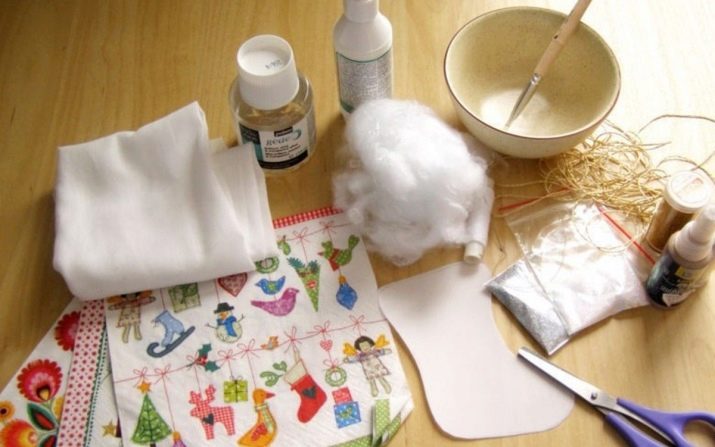
Master class for beginners
Let's consider in more detail how to make decoupage on fabric with your own hands.
First option
First, we prepare the workplace. There should be no foreign objects on it. Then we create good lighting. Then we lay out all the necessary materials, and first prepare them.
Next, carefully cut out the required pattern from the napkin with scissors.
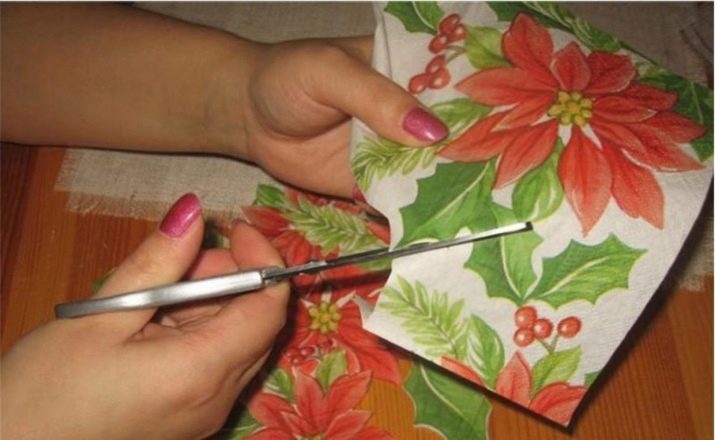
Those who have a lot of experience can do it with their hands.
We iron the fabric well before starting the process. Now we proceed directly to the process.
We evenly lay out the material on the surface. Then we place the already cut image on the fabric so that it lies flat. We choose the place where the drawing will be, and mark the edges very carefully with a pencil. Then we process the material with PVA glue without going beyond the intended boundaries. And we wait until it dries up. In the event that the mass is too thick, you need to dilute it with cool water. Then we go over the surface again.
If a napkin is used as a picture, then we remove the white layer from it, and put the other on the already dried glue. And on top we apply another layer of glue.

After that, everything is covered with gauze and ironed well. This is done from the middle to the edges of the image. We iron the drawing for 5 minutes so that it sticks well.
It is very important that the pattern adheres completely to the material.
In the event that there are places where defects have formed, then the process should be repeated with ironing. And if in some places the image is not translated, then we correct it with the help of paints.
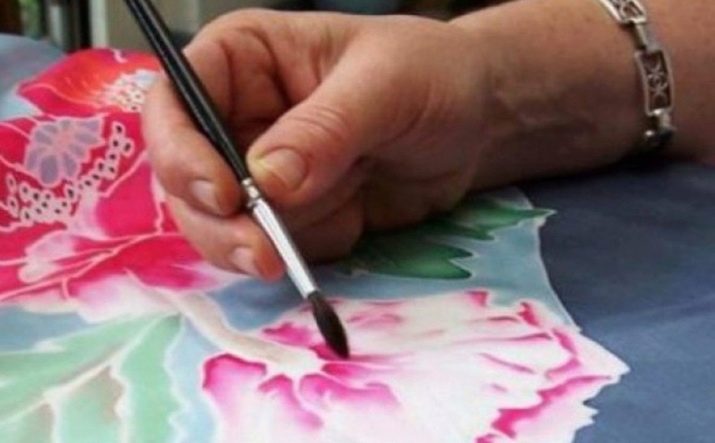
Then we send to dry for several hours. When everything is dry, the drawing can be covered with acrylic varnish, only the layer should be thin so that it dries faster and nothing smudges. This will extend the service life of the item. And also the surface can be protected by covering it with varnish.
If you do not want to spoil the work area with glue, then put a plastic bag or a regular file under the material.
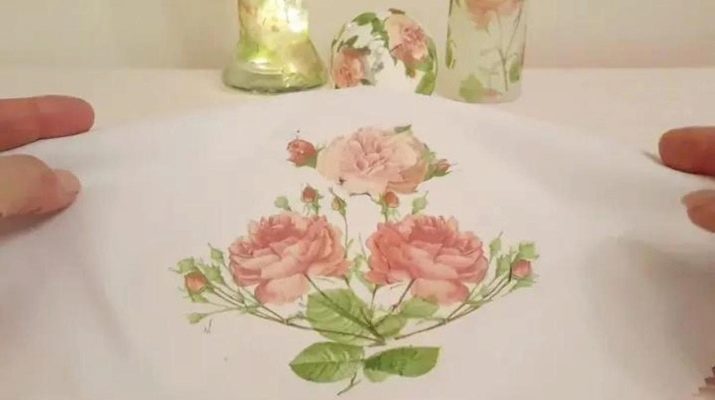
Second option
This method is not much different from the first: the same materials are used, the preparation process for getting started is the same as in the first option. But there are also differences.
We take the selected fabric, lay on it and level the napkin, before that we remove the white layer from it. Then we apply a thin layer of ordinary glue on it. With a brush, draw from the middle to the edges of the napkin. As a result, it sticks to the material. After everything is stuck, we once again apply a layer of PVA glue. Then we send the material to dry for a day. After the expiration, we iron it thoroughly, only in this version the steam is not used.
To prevent the picture from remaining on the iron, we do it through cheesecloth.
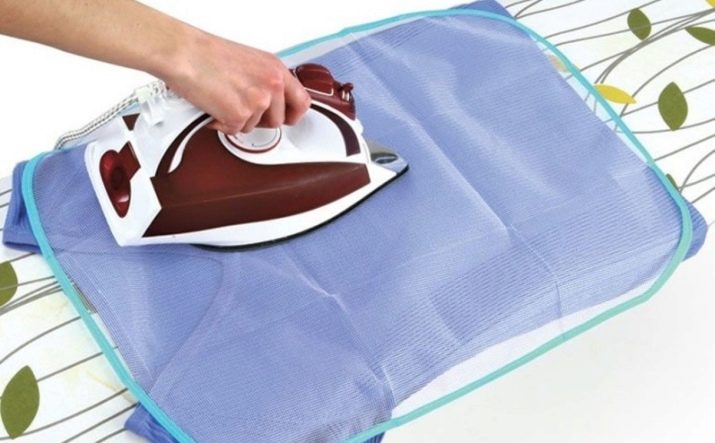
To avoid wrinkling or tearing of napkins, the glue should be applied in a circular motion using soft synthetic brushes. After the glue has been applied, if desired, you can create a background or additional decorations, or leave it without any changes.
It is better to choose this option for decoupage for beginners in this business, because there is less likelihood of harming work.
The main rule of decoupage is accuracy. Over time, each master has his own groundwork, and he supplements his work with them. Therefore, you should not be afraid and bring something new. Do not be afraid to make any mistakes, it will only make your work more beautiful.
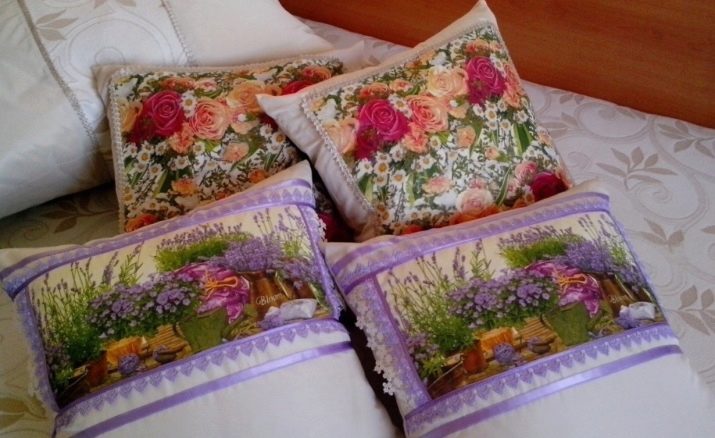
You will learn more about how to make decoupage on fabric below.
Process features
To make a thing in the decoupage style, you need to use napkins with a pattern, which have several layers, or decoupage cards. They also use a special water-based glue for this, but if there is none, ordinary PVA glue, synthetic brushes and, if desired, acrylic varnish are well suited.
You can choose absolutely any of various materials for decoupage. This could be jeans, jackets, sweatshirts, wallets, or other accessories that you would like to update. If you have interesting ideas and desire on how to decorate things, be sure to try.
To succeed in decoupage, training is important, every time you get better.
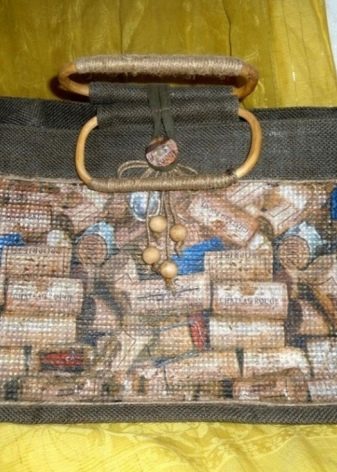
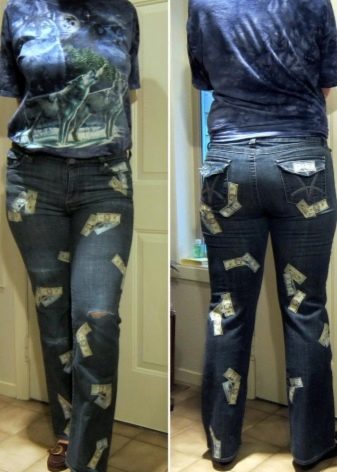
Do not forget that before starting the process, it is necessary to wash and dry the item. For a more even application, you need to mark the material, you can do it with a pencil. Before gluing the napkin to the fabric, it should be saturated with glue.
Then put a napkin on this place, and also apply glue to it. The main thing is to do it with a thin layer in a circular motion. Then you should leave the thing and let it dry. This will take from several hours to a day. It is important to iron everything through cheesecloth so that the napkin adheres well to the material. If you plan to wash your item frequently with decoupage, then it is better to choose hot melt glue. In order not to spoil the napkin, you should choose soft, synthetic brushes.
If you follow all the tips, then you can reach a high level in this area of activity.
